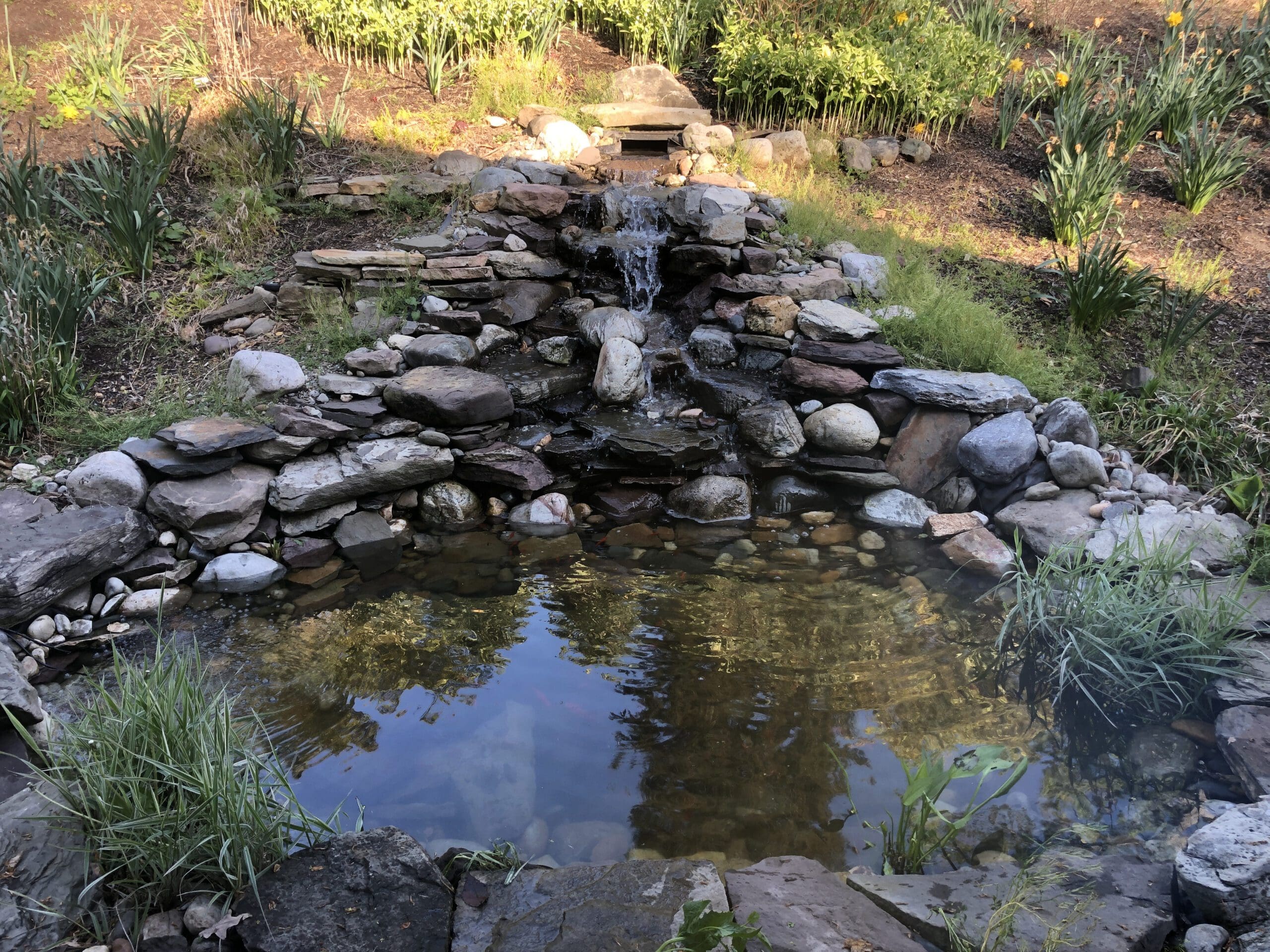What is Pond Algae?
The two most common types of algae found in ponds are suspended and string algae. Suspended algae, sometimes called “green water”, are single-celled organisms that reproduce at a rapid rate. Due to their tiny size, this algae type is capable of passing through most filtration systems. If the conditions are right, there can be as many as 5 million algae cells present per milliliter of water. If left untreated, suspended algae can turn a pond completely murky green in color. String algae, also known as “hair algae”, is a filamentous species. It grows in long strands and clings to rocks and plants. If left untreated, the strands can tangle together, forming matts that can double in weight in just 24 hours.
It is important to keep in mind that algae play a part in the organic pond ecosystem. There is no harm in having small quantities of algae in your pond or water feature. If the algae growth becomes excessive and difficult to manage, then it is time to consider treatment and prevention.
Why is there Pond Algae?
Before treatment, it is important to know and understand the causes of excessive algae growth. The growth of both suspended and string algae can increase in the presence of excessive sunlight. Blooms of suspended algae typically align with a water imbalance such as an excess of nutrients caused by overfeeding fish, overstocking fish, stormwater runoff, or a lack of proper filtration.
When the seasons begin to change in the early spring, this is when you may start to notice an increase in suspended algae blooms. In these cases, water temperatures are too low for fish and aquatic plant activity, but warm enough for pond algae to grow, making it the only organism actively contributing to the pond’s ecosystem. With no competition for nutrients, algae thrives. These algae clusters tend to clear up on their own after the water temperatures warm up enough for fish and plant activity to resume. If the problem does not resolve on its own, there are numerous solutions to control and prevent future algae growth.
Treatment and Prevention
Successful algae control starts with reducing the nutrients in your pond water that attracts algae growth. Organic debris like grass clippings, leaves, and fertilizer are loaded with these nutrients and should be kept far away from your pond water. You can build a buffer of beneficial vegetation around the edge of your pond to help keep nutrients from entering the water.
You can also prevent the accumulation of nutrients by installing and continuously running a pond aeration system. These systems improve water circulation which in turn increases the amount of diffused oxygen in the water. With a healthy supply of oxygen, the growth of aerobic beneficial bacteria is properly supported. Beneficial bacteria consume the organic debris and nutrients that attract algae. Consistent aeration, 24/7, will have these bacteria working harder to keep your pond clean and clear of algae.
A simple solution is to reduce the amount of direct sunlight that your pond receives. This can be accomplished by introducing plants to your pond surface such as water lilies and hyacinths. Aquatic plants will also compete for the nutrients in your water, leaving less for algae to use.
The main goal of treatment is to re-balance the relationship between your pond and algae, not to get rid of algae completely. Water treatments are an excellent solution to an existing algae problem. Algaecide by Aquascape is a liquid pond algae control product that quickly and efficiently combats and stops algae growth. This treatment is effective in fighting both suspended and string algae.
Thing to Remember About Pond Algae
Remember, some algae is good and reflective of a healthy pond ecosystem. If you notice your pond water is turning green or clumps of filamentous algae clogging your streams, then it is time to apply treatments and consider preventative changes.
If you’re looking for a quick fix to your algae problem, you can always reach into your pond and physically remove the algae growth. In the case of string algae, the quicker you remove the growth, the better. If spores are released into the water, it is only a matter of time before the problem resumes. Use scissors to expedite the removal process if needed. For assistance removing your algae or if you have any questions, contact AquaReale.






